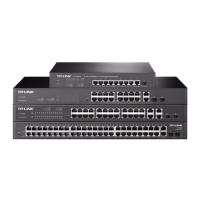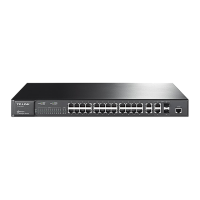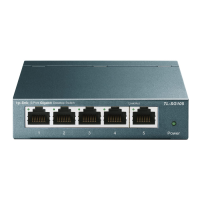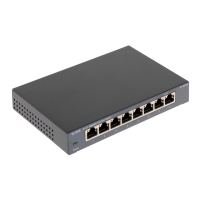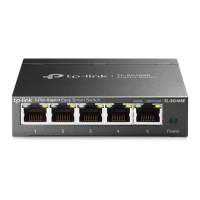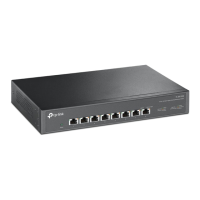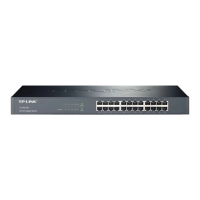TL-SL5428E
24-port 10/100Mbps + 4-port Gigabit L2 Managed Switch CLI Guide
143
time-segment] [frag { disable | enable }]
no acl rule std-acl {acl-id} {rule-id}
Parameter
acl-id —— The desired Standard-IP ACL for configuration.
rule-id —— The rule ID.
op —— The operation for the switch to process packets which match the rules.
There are two options, discard and permit. Discard means discarding packets,
and permit means forwarding packets. By default, the option is permit.
source-ip —— The source IP address contained in the rule.
source-ip-mask —— The source IP address mask. It is required if you typed
the source IP address.
destination-ip —— The destination IP address contained in the rule.
destination-ip-mask —— The destination IP address mask. It is required if you
typed the destination IP address.
time-segment —— The time-range for the rule to take effect. By default, it is
not limited.
frag —— Enable/Disable Fragment. By default, it is disabled. If Fragment is
enabled, this rule will process all the fragments and the last piece of fragment
will be always forwarded.
Command Mode
Global Configuration Mode
Example
Create a Standard-IP ACL whose ID is 120, and add Rule 10 for it. In the rule,
the source IP address is 192.168.0.100, the source IP address mask is
255.255.255.0, the time-range for the rule to take effect is tSeg1, and the
packets match this rule will be forwarded by the switch:
TP-LINK(config)# acl create 120
TP-LINK(config)# acl rule std-acl 120 10 op permit dip 192.168.0.100 dmask
255.255.255.0 tseg tSeg1
acl policy policy-add
Description
The acl policy policy-add command is used to add Policy. To delete the
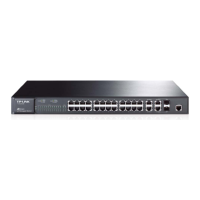
